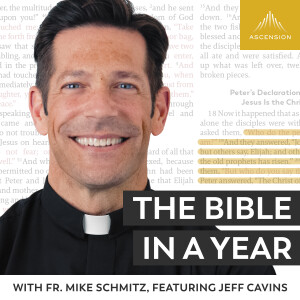

Day 21. Jesus’ Final Preparations & Service
14 When the hour came, Jesus and his apostles reclined at the table. 15 And he said to them, ‘I have eagerly desired to eat this Passover with you before I suffer. 16 For I tell you, I will not eat it again until it finds fulfilment in the kingdom of God.’
17 After taking the cup, he gave thanks and said, ‘Take this and divide it among you. 18 For I tell you I will not drink again from the fruit of the vine until the kingdom of God comes.’
19 And he took bread, gave thanks and broke it, and gave it to them, saying, ‘This is my body given for you; do this in remembrance of me.’
20 In the same way, after the supper he took the cup, saying, ‘This cup is the new covenant in my blood, which is poured out for you. 21 But the hand of him who is going to betray me is with mine on the table. 22 The Son of Man will go as it has been decreed. But woe to that man who betrays him!’ 23 They began to question among themselves which of them it might be who would do this. Luke 22:14-23 Jesus Prepares
The disciples needed a room within Jerusalem itself, and also required food - a lamb, bread, bitter herbs and wine. The Passover meal contains historical and theological symbolism regarding the death of Jesus. This is why this meal is the model for the central act of Christian worship, which is Holy Communion.
Here is an outline of a Passover meal at the time of Jesus:
- Opening Prayer
- First cup of wine and a dish of herbs and sauce.
- Story of the Passover recited.
- Psalm 113 was sung
- Second cup of wine
- Prayer of Grace
- Main course of roast lamb with unleavened bread and bitter herbs
- A further prayer
- Third cup of wine.
- Psalms 114 to 118 were then sung.
- Fourth cup of wine.
Depending on your church, it can be called amongst other things, the Eucharist or The Lord’s Supper. Christian Disciples are commanded to participate, as Jesus said: “Do this in remembrance of me” (Luke 22:19). Some churches do it every service and others do it monthly. Whenever we participate in it, we do it regularly as a remembrance of Jesus until He comes again (1 Corinthians 11:26). The bread symbolizes His body broken on the cross and the wine symbolizes His blood which was shed on the cross. Therefore before we partake of the bread and wine, we are to examine ourselves and confess any unforgiven sin (1 Corinthians 11:28-29). This is done because it would be hypocritical to eat it while harbouring known sin in our hearts and having fellowship with Jesus and others in the church!
This Last Supper, the Holy Communion – what is its significance for us?
- It symbolizes fellowship with other believers in the universal church (1 Corinthians 10:17)
- We receive the benefits of His once and for all sacrifice (1 Corinthians 10:16)
- We spiritually feed upon Christ (1 Corinthians 11:24)
- It symbolizes the death of Christ for our sin (Luke 22:19)
- It symbolizes our acceptance of Christ’s death for us.
- It symbolizes our dependence on Christ for spiritual life.
- Finally when a person remembers, that makes it their own personal story. If something is only recalled as an historical event, then that is somebody else’s story being recalled. That is why Holy Communion is personal – it’s our story! Is it yours also?
All these symbolize the New Covenant made between God and Jesus’ Disciples – a Covenant guaranteeing salvation! The new covenant is a new meal, in order to remind his followers in every age about the work of Jesus Christ on the Cross. The new covenant (Luke 22:20), Jesus claims that His death, was spoken about by the prophets Jeremiah (Jeremiah 31:33-34) and Ezekiel. It was a new covenant in which God’s people will be able to know Him intimately for their sins will be forgiven. Whenever a covenant was made between God and man in the Old Testament, blood was always shed. Jesus’ blood will be the seal on this New Covenant, which is why we remember it.
Jesus Serves
Jesus washes the disciples’ feet
As part of the custom of the day, a servant or slave usually undertook foot washing of guests. Since none of the disciples had done this, Jesus Himself undertakes the task (John 13:4-5). Peter is recalcitrant and resistant as always, and objects (John 13:6, 8). Peter learns that only those cleansed by Jesus and trusting in Him fully, can be a part of the kingdom (John 13:7, 9). As we look back at this episode, knowing what we do now of the Cross, we learn how this simple act of washing feet is symbolic of Jesus’ sacrificial death on the Cross.
The Cross and washing feet are both displays of great love and service. Just as Peter opposed Jesus going to the cross (Matthew 16:21-23), so he objected to having his feet washed here. Jesus’ getting up to serve symbolizes His coming to serve. As he took off his cloak, this symbolizes the taking off of His glory when He became man. Girding Himself with a towel, symbolizes his taking on human flesh in the incarnation at his birth. As the water cleansed the feet, so Jesus death and blood cleanse from sin. As He returned to where he was sitting and sat down after finishing this act of service, Jesus returned to the right hand of God after his work on the Cross.
When people become Christian, their sins are forgiven through Jesus’ death on the Cross. That is when they had our “bath” as it were. That is the very point when we, if we are Christians, were justified before God and we are declared His child. Having been justified already, we don’t need a bath anymore! But we do need the equivalent of a feet washing daily and or every time we take Holy Communion and a cleansing of our sin when we confess it before our God and repent.
Click or tap on the appropriate link below to subscribe, share or download our iPhone App!
More Episodes
All Episodes>>You may also like
Create Your Podcast In Minutes
- Full-featured podcast site
- Unlimited storage and bandwidth
- Comprehensive podcast stats
- Distribute to Apple Podcasts, Spotify, and more
- Make money with your podcast












